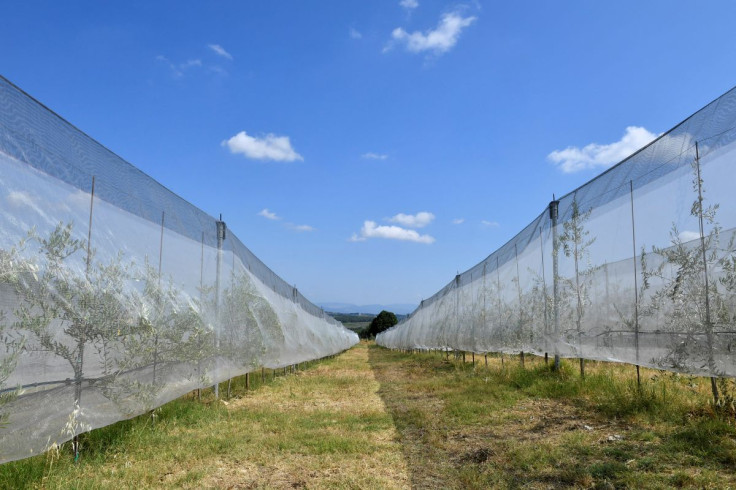Drought Takes Toll On Tuscany's Famed Olive Oil And Wine Production

Farmers in Tuscany, the heart of Italy's prized wine and olive oil industry, are battling to salvage as much as they can of this year's crop from the ravages of drought and heatwave.
A lack of rainfall since spring has affected even plants that traditionally thrive in hot and dry conditions.
In San Casciano in Val di Pesa, near Florence, olive trees dot the picture-book hillsides, but the soil parched by the scorching sun is not producing enough fruit."Climatic issues had a decisive influence," said olive grower Filippo Legnaioli.
"We had a very dry spring with practically no rainfall from March to today and this happened at a crucial time during the transition from flower to fruit," added Legnaioli, president of the local "Frantoio Grevepese" cooperative.
Without water, many flowers fall to the ground before they can bear fruit. And with few olives on the branches, even the sparse harvest becomes an economic headache.According to Legnaioli, this year's oil production could be reduced by 50-60%.
SPECIAL REMEDIES
Other olive growers have decided to change their methods of cultivation, opting for a supplementary irrigation system that can offset the effect of drought and scorching heat."This year we use a, let's say, 'rescue' irrigation to protect the production of olives on the plants while on traditional olive trees, unfortunately, high temperatures and drought lead to the loss of many olives," farmer Luigi Calonaci explained.
The system works through a black tube that has been set up beneath the trees and that spurts out small amounts of water. The Calonaci farm has also opted to use white netting to protect the plants from olive fruit flies whose larvae feed on the fruit of the trees, a problem which is not directly related to the drought but can cause a big loss in yield.
The effects of climate change not only impact production and plants but are even changing the geography and rhythms of the Italian farming landscape.A few years ago, olive groves were mainly the preserve of historically hot and arid areas such as Sicily. Now regions such as Val d'Aosta in the far north of Italy, famous for its ski resorts and mountains, can produce their own oil.
EARLY HARVEST
Not only heat and lack of rain, but climate change also affects timings and the properties of wine.In Castellina in Chianti, September is normally the month of the grape harvest, as it is throughout the country.But with extreme and prolonged high temperatures, the bunches of grapes are ripening earlier than expected.
"We have smaller grapes, and we expect the number of grapes to be lower than the average of the last few years, probably in line with last year's", the vice-president of "Chianti Classico" Consortium, Sergio Zingarelli, told Reuters.In the Chianti region, one of the most famous for wine production, in addition to a reduction in grapes, wine growers also have to deal with extreme weather events that do not quench the thirst of the soil but damage the crops."Extreme weather phenomena are getting stronger and stronger," said Paolo Cianferoni, the owner of "Caparsa" wine estate.
"A couple of weeks ago, a hailstorm destroyed 40% of grapes here. Luckily the quality of the grapes has not been affected, so we'll see what happens."
© Copyright Thomson Reuters {{Year}}. All rights reserved.




















